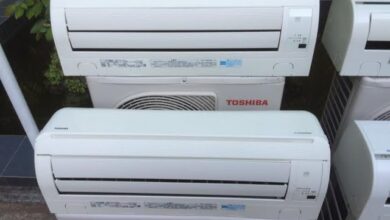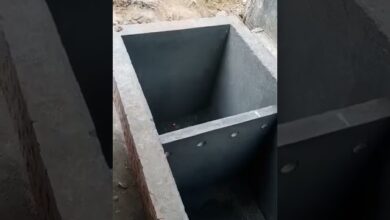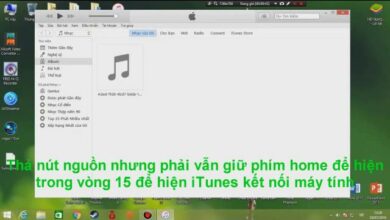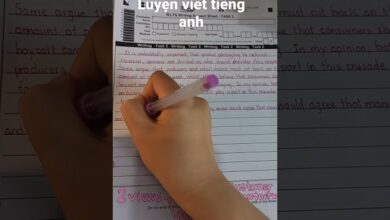Puma Air Compressor Reviews: 40, 60, and 80 Gallon – BÁN TÀI KHOẢN GIÁ RẺ ,KHÓA HỌC VIP MEMBER kiến thức mới năm 2023
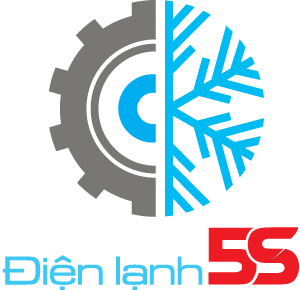
Mục lục bài viết
Puma Air Compressor Reviews: 40, 60, and 80 Gallon – BÁN TÀI KHOẢN GIÁ RẺ ,KHÓA HỌC VIP MEMBER – Cập nhật kiến thức mới nhất năm 2023
If you’re looking for a good air compressor for your shop, there are a number of options on the market. If you’re currently researching air compressors, you may have come across Puma air compressors.
So are Puma air compressors good? Yes, Puma Air compressors are quality compressors designed for small shops or garages and are capable of light commercial use.
Xem thêm: puma 60 gallon air compressor reviews
Xem thêm: puma air compressor reviews
They are not designed to stand up to the continuous industrial use of something like a Quincy air compressor, but the initial investment is often much lower.
If you’re still on the fence about purchasing a Puma air compressor, we’ll help you to understand the potential value of such an investment. We will go over several models in the 40, 60, and 80-gallon sizes.
Puma Air Compressors
ModelTank SizeHorsepowerCheck Pricing
40-Gal.3Check Price
40-Gal.5Check Pricing
60-Gal.3Check Pricing
60-Gal.5Check Pricing
60-Gal.6.5Check Pricing
80-Gal.5Check Pricing
80-Gal.5Check Pricing
80-Gal.6.5Check Pricing
80-Gal.6.5Check Pricing
80-Gal.7.5Check Pricing
80-Gal.7.5Check Pricing
Puma is a smaller company originally based in Taiwan that has developed a reputation for sturdy but affordable power tools. Puma now has a U.S. branch located in Memphis, Tennessee, and most of the parts for their compressors are now produced in the United States. (source).
Puma has been able to enter the market next to industry giants like Quincy by balancing quality with affordability. They have a reputation for being reliable, running quieter, and running cooler with their solid cast iron pumps.
Puma offers a one-of-a-kind 40-gallon model and really begins to compete in terms of startup costs when you enter into the 80-gallon range. Some of their models can cost around several hundred dollars less than a comparable Quincy model.
This is because Quincy air compressors are specifically designed to lower the cost of ownership over the life of the compressor. If the air compressor will be constantly running, you will want something highly energy-efficient that produces the most air while drawing the least amount of power.
If you own a shop or garage and you’re going back and forth between the compressor and other tools, you will not be as concerned about such operating costs. The fact that they’re ASME or CRN certified also means they’re a great choice for light commercial use.
Tank Capacity
Puma produces a wide variety of air compressors with varying tank capacities but, for the purposes of this article, we will be focusing on compressors with 40-gallon, 60-gallon, and 80-gallon tanks.
A 40-gallon tank will save a great deal of space but simply will not be able to run as long as an 80-gallon model before the motor has to kick in. Attempting to use a compressor with a 40-gallon tank on a regular basis for jobs that really require a 60- to 80-gallon tank will quickly take a toll on the compressor motor.
A compressor with a 40-gallon tank will be just fine for brad nailers, framing nailers, impact wrenches, small plasma cutters, powder coating, and light spray painting. However, for sandblasters, grinders, and sanders, you’re going to need a higher capacity tank.
Larger tanks will also be handy for serious automotive enthusiasts who wish to paint more than just a small panel of their vehicles.
Puma Pumps
Puma pumps are of the typical belt-driven variety with a large flywheel, and they come in single-stage or two-stage types. A two-stage compressor with two cylinders uses the piston in one cylinder to push air into the second cylinder as a way to increase the pressure (source).
One advantage of the two-stage system is that an intercooler can be added to help decrease the temperature of the air it produces. Like Quincy, Puma compressors have copper, finned intercooler and aftercooler lines that help remove heat as well as moisture.
Cast-Iron Cylinders
One distinctive feature of Puma compressors is that their cylinder heads are made of solid cast iron which allows for greater compressive strength. Quincy compressors have aluminum cylinder heads with cast iron sleeves.
While the aluminum helps to dissipate heat and resist rust, it also decreases the strength of the cylinder head.
Two-Cylinder and Three-Cylinder Pumps
Xem thêm: Best Large Hummingbird Feeders – Hummingbirds Plus
Xem thêm: Can I Use an Extension Cord to Charge My Golf Cart? (Explained) – Golf Cart Go
A typical compressor, like those on a Quincy, will contain one or two cylinders. Most Puma compressors come with either a two-cylinder V-type or a three-cylinder W-type radial pump. The two- and three-cylinder pumps run considerably quieter than single-cylinder pumps.
Oil-Lubricated and Oilless
Like most air compressors, Pumas are generally oil-lubricated, articulated-piston compressors. The bearings and cylinder walls are splash-lubricated as the crank rotates by dipping into an oil bath. You can view the oil level by simply checking the sight glass on the pump.
The downside of this is that some of the oil inevitably gets into the air supply. Oilless models are available for applications where air purity is a major concern like applications with food, electronics, textiles, and spray painting.
CFM Rating
The amount of power going to your tools is measured in cubic feet per minute (CFM), and it’s important to distinguish between CFM for actually delivered (FAD for Free Air Delivery) air and CFM for displacement (source).
Displacement CFM is a measure of the efficiency of a compressor pump by comparing cylinder displacement with the motor’s RPM and is not an accurate measure of the power going to your tools. The CFM FAD of your compressor will be less than a third of its displacement CFM.
CFM is an area where Puma tends to fall a little short of Quincy models. Quincy boasts the highest actual cubic feet per minute (ACFM) per brake horsepower (BHP) on the market, producing more air while consuming less energy (source).
WEG Motors
Puma compressors use WEG induction motors produced in the United States, though WEG is based in Brazil (source). Quincy compressors, on the other hand, use U.S.-made Baldor motors. Should the motor go bad on you, they’re a little less expensive to replace on a Puma.
Most of the 40-, 60-, and 80-gallon Puma models operate on single-phase 208-230V motors, but some of the 80-gallon and larger models have three-phase motors for 460/480V.
Puma motors typically run at higher RPMs than Quincy models since Quincy machines are designed to run slower and draw fewer amps for maximum efficiency and longevity.
Starter Switch
Some models come with a combination pressure switch starter with pressure gauge, while others come with a magnetic starter.
Combination starters have overload protection as well as short circuit protection and a disconnect device. Magnetic starters are designed to safely start motors with larger loads, and they also have overload protection and an automatic cutoff function.
Valves
For 40- to 80-gallon tank model Pumas, the tank outlet is a ½ inch ball valve compared to ¾ inch on a Quincy unit. The ball valve for the extended manual drain is ¼ inch.
Puma 40-Gallon Air Compressors
Puma TE-3040V
Check Pricing
Puma TE-5040V

Check Pricing
Puma produces several professional-grade 40-gallon models such as the TE-3040V, TE-5040V, and TE-6540V with 3 horsepower, 5 horsepower, and 6.5 horsepower motors respectively that run at a high 3450 RPM (source).
They can run off of a 220/240V outlet with the 3 horsepower model drawing as little as 15 amps, while the 6.5 horsepower model draws as much as 24.5 amps of power. Most of these come with a combination pressure switch starter rated at 30 amps, although some have the option for a magnetic starter (source).
The 40-gallon tanks are rated at 200 PSI, and they each have a maximum PSI of 175. They don’t take up a lot of space at around 55 inches tall, but it still weighs a hefty 260 lbs to 290 lbs, depending on the model.
The Puma 40-gallon models are really in a class of their own since many other 30 or 40-gallon compressors are either of the gas-powered truck mounting variety or of considerably lower horsepower. These would make an excellent backup supplementary unit to a larger industrial model.
One of the closest Quincy models that you could compare it to would be the Quincy QR-25 series models V210 and F210 with a 30-gallon tank, 1 HP motor, 2-cylinder pump, and about 5 CFM at 100 PSI while weighing roughly the same (source).
The Puma TE-3040V is capable of 10.2 CFM at 90 PSI and 9.3 CFM at 175 PSI, while the Puma TE-6540V is capable of 17 CFM at 90 PSI and 16 CFM at 175 PSI. The intermediate TE-5040V produces about 14 CFM at 90 PSI and 12.8 at 175 PSI.
Any of these will give you more tank capacity than the portable 3.5 horsepower Quincy Q12126VPQ 26-gallon model for a few hundred dollars more, although the Quincy Q12126VPQ and the 2 horsepower, 20-gallon Quincy Q12120PQ are able to operate on a 110/120V outlet.
Puma 60-Gallon Air Compressors
You can also get a 60-gallon model with a little more capacity using the same amount of horsepower as the 40-gallon models. Puma has a few single-stage 60-gallon models that are similar in price to comparable Quincy models.
Puma PK6060V

Check Pricing
The Puma PK6060V has a 3 horsepower motor that draws about 15 to 16.5 amps and operates at 3450 RPM. The comparable 3.5 horsepower, 60-gallon Quincy Q13160VQ draws about 16 amps and operates at 1250 RPM.
It has a 2-cylinder, single-stage pump capable of 12.6 CFM at 40 PSI and 11.3 CFM at 90 PSI with a max PSI rating of 135. That’s a little less than the Quincy Q13160VQ which produces 14.6 CFM at 40 PSI and 13.1 CFM at 90 PSI with the same max PSI.
The Puma weighs a little more at 305 lbs while the Quincy weighs about 261 lbs, and the Quincy has a duty cycle listed at 50% with a pump life of over 10,000 hours. The Puma’s duty cycle is not listed.
You can find them at similar prices, and you may be able to catch one or the other on sale.
Puma PK6560V

Check Pricing
Puma also makes the 5 horsepower PK6560V. This has a single-stage pump compared to the highly-rated two-stage, 5 horsepower Quincy QT-54 60-gallon model. The motor actually draws fewer amps at 19 to 20 instead of 24 amps while both run at 3450 RPM.
Xem thêm: 2020 CA Report: Best Value Cigar Humidification Devices
Xem thêm: Electrical Beauty Product Hazards | Woodard
The Puma produces a comparatively low 11.3 CFM at 90 PSI when looking at the QT-54’s 15.4 CFM at 90 PSI, and it has a lower max PSI at 135 compared to 175. The PK6560V does use a three-cylinder radial pump for a little extra stability and quietness compared to the Quincy QT-54.
For a little extra horsepower, you can get the 6.5 horsepower 60-gallon Puma PK-7060V which can operate at 19.5 CFM at 90 PSI, but it still only has a maximum PSI of 135.

Check Pricing
Puma 80-Gallon Air Compressors
An 80-gallon tank is a must if you want the capacity to do a full automotive paint job or to operate tools like sandblasters. This is where the potential value of a Puma really comes into play.
Puma produces several 80-gallon models, ranging in horsepower from 5 HP to 10 HP, and some of these cost considerably less than a comparable Quincy model.
These have prefixes like TE, TN, TUE, and TUK, indicating differences in some of their features. For example, TE models all use three-cylinder radial pumps and don’t come with magnetic starters.
The TN models tend to have two-cylinder V-style pumps and magnetic starters. All of the TN, TUK, and TUE models have magnetic starters for heavier loads, and most of them run at a lower RPM of 1740 or 1750, depending on whether they’re single-phase or 3-phase.
Those models ending with an M have pre-wired and mounted magnetic starters for their higher loads, and those models ending in M3 have three-phase motors.
5 HP Puma 5080V Models

Check Pricing
The TE-5080V is considerably less expensive than the 5 horsepower Quincy QT Pro. Its motor draws fewer amps at 19 to 21 compared to 28 and operates at 3450 RPM. It produces only 12.8 CFM at 175 PSI compared to 17.2 CFM at 175 PSI. It also weighs about 200 lbs less at 460 lbs.
As far as longterm performance goes, the Quincy is still the better model. But for light commercial use, the Puma offers a significantly lower start-up cost that many will find worth it for the extra tank volume.
Five horsepower Puma models with the magnetic starter include the TN-5080VM and TUK-5080VM, as well as the three-phase models such as the TN-5080VM3 and TUK-5080VM3.
Puma TN-5080VM

Check Price
Their motors operate at a lower RPM of 1740 or 1750 compared to the TE-5080V at 3450 RPM, while their pumps operate at 985 RPM. These produce a significantly higher CFM of 16.5 to 17 at 175 PSI.
6.5 HP TE-6580V and TN-6580VM
Puma 6.5 HP TE-6580V

Check Pricing
Puma 6.5 HP TN-6580VM

Check Pricing
Puma also makes two 6.5 horsepower 80-gallon models, the three-cylinder TE-6580V and the two-cylinder TN-6580VM with a magnetic starter switch. Both motors operate at 3450 RPM and both draw 23 to 24.5 amps.
With a little more horsepower than the Quincy QT-5 Pro and the Puma TE-5080V, it comes closer to the QT-5’s CFM at 175 PSI at 16 while still being several hundred dollars cheaper.
7.5 HP 7580V Models
All of the 7.5 horsepower models have magnetic starter switches, and these include the single-phase TN-7580VM, TUE-7580VM, TUK-7580VM, and the three-phase TUE-7580VM3 and TUK-7580VM3.
Puma TUK-7580VM

Check Pricing
Puma TUE-7580VM

Check Pricing
Most of these, with the exception of the TN-7580VM, have motors that operate at 1740 or 1750 RPM. The three-phase models can run off of 17.9 to 19.8 or 8.97 amps, while the single-phase models range from 31 to 40 amps.
The single-phase TUK-7580VM runs off of 40 amps, which is comparable to the single-phase QT-Max or QT-Pro that draw about 40 amps and runs at 1725 RPM. The price difference between these Puma and the Quincy models can be as high as around $700.
Similarly, the 3-phase TUK-7580VM3 or TUK-7580VM3 can run off of as little as 8.97 amps and cost $600 to $700 less than a three-phase Quincy QT Pro 7.5-HP 80-Gallon compressor.
The TUK-7580V models produce the highest CFM at 175 PSI of 23, while the TUE models produce 22 and the TN models 21. The Quincy QT-Max and the QT-Pro, by comparison, both produce 22.6 CFM at 175 PSI.
The TUK-7580VM has a reserved ¾ inch high-flow port that allows for a piping extension. It also has an extended manually operated drain that allows for easy attachment.
The 7.5 horsepower models come with premium package options like a low oil shut-off switch, an aftercooler, automatic water drain valve, moisture removal kit, and vibration dampers (source).
Final Thoughts
Puma air compressors are ideal for DIY shops and are ASME certified for commercial use. While not as energy-efficient as the industry-leading Quincy compressors, they have a reputation for running cooler with less noise.
The Puma TE-5040V is a very popular 40-gallon model that will cover a wide array of applications while being very compact.
Puma’s 80-gallon models like the 5 horsepower TE-5080V or the 7.5 horsepower TUK-7580VM provide a great value for those who don’t require a compressor that’s constantly running. If you’re able to sacrifice a little CFM and don’t require the same running time, a Puma air compressor might just be a wise investment for you.
Kết thúc
Ngoài các bài viết tin tức, bài báo hàng ngày của https://www.kythuatcodienlanh.com/, nguồn nội dung cũng bao gồm các bài viết từ các cộng tác viên chuyên gia đầu ngành về chuỗi kiến thức kỹ thuật điện, điện lạnh, điện tử, cơ khí,…,.. được chia sẽ chủ yếu từ nhiều khía cạnh liên quan chuỗi kiến thức này.
Bạn có thể dành thời gian để xem thêm các chuyên mục nội dung chính với các bài viết tư vấn, chia sẻ mới nhất, các tin tức gần đây từ chuyên gia và đối tác của Chúng tôi. Cuối cùng, với các kiến thức chia sẻ của bài viết, hy vọng góp phần nào kiến thức hỗ trợ cho độc giả tốt hơn trong hoạt động nghề nghiệp cá nhân!
* Ý kiến được trình bày trong bài viết này là của tác giả khách mời và không nhất thiết phải là SEMTEK. Nhân viên tác giả, cộng tác viên biên tập sẽ được liệt kê bên cuối bài viết.
Trân trọng,
Các chuyên mục nội dung liên quan




